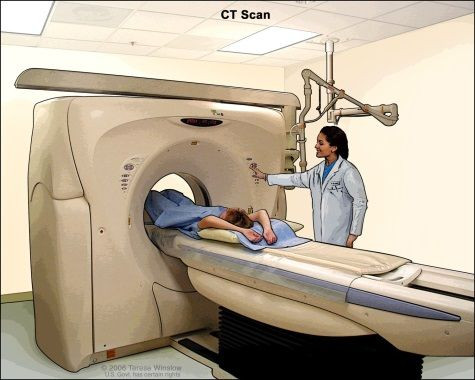A Two-fer: Screen for One Disease, and Find Another

Most women over age of 65 have heard of a DEXA scan – an X-ray test that measures bone density, or how strong and thick bones are, usually in the spine and hip. The DEXA scan identifies osteoporosis, or weak bones that may break easily.
But could doctors look for signs of osteoporosis while screening people for a different medical problem? Researchers in China found that a type of CT scan called low-dose computed tomography, or LDCT, typically used to screen people at risk for lung cancer, can also be used to diagnose osteoporosis. A low dose CT uses about 90% less ionized radiation than a conventional CT scan. A CT scan takes cross-sectional images of soft tissue, bone and blood vessels, showing more detail than an X-ray.
Building strong bones
The human body needs strong bones. Bones are made from calcium and collagen; these form the frame to which the flesh clings. Bone forms over many years, getting stronger until a person reaches early adulthood. So, the more bone you produce while young, the more protection you have against osteoporosis in later years.
In a person’s 20s, the body can start to lose bone unless it receives enough vitamin D, calcium and exercise to help prevent that loss.
When the amount of bone produced does not replace what’s been lost, osteoporosis sets in.
Women are more likely than men to develop osteoporosis for two reasons. Their bones are typically smaller than a man’s, and the estrogen drop that accompanies menopause can cause a rapid loss of bone. Men are not immune to bone loss, however, and are also at risk for osteoporosis.
An alternative to DEXA?
During 2018 and 2019, over 69,000 adults were screened for lung cancer using LDCT, reported a study published in the Journal of Bone and Mineral Research. Researchers at multiple health centers across China found that LDCT can determine bone density, which means that people who have an LDCT scan for another reason, such as a lung cancer screening, can also be screened for osteoporosis. The researchers noted two benefits: It is less expensive to use the LDCT and it exposes the person to less radiation.
LDCT may have an edge over DEXA scans when it comes to diagnosing osteoporosis in men, said the study. While the number of women diagnosed with osteoporosis by LDCT was similar to the number diagnosed by DEXA scans, twice as many men were diagnosed by the LDCT compared to DEXA scans.
The take home
The study shows that for people being screened for lung cancer – such as older people who have smoked for years or heavy smokers who have quit --- a LDCT scan could someday offer a two-for-one screening.
In the meantime, if you are a woman over 65, or are at risk for broken ones, this advice is for you: The US Preventive Services Task Force recommends a DEXA bone density test. As for how often, that depends on the results of your first screening. If there are no problems, have another scan in about 15 years.



























